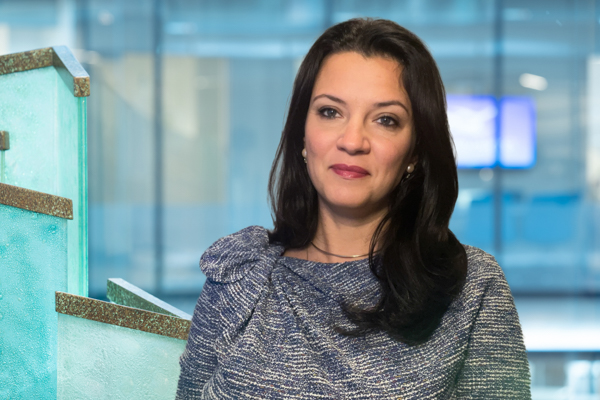Consumer Costs Continue to Increase in 2017 Exchanges
Summary
Plans sold in exchange markets in 2017 feature higher premiums, growing consumer out-of-pocket costs, and more restricted access to providers and hospitals than in previous years, according to a new analysis from Avalere.As the end of open-enrollment approaches, more than 11.5 million people have signed up for exchange coverage through HealthCare.gov, a slight increase of almost 300,000 people compared to the same time last year. Of the 11.5 million enrollees, 71% have selected a silver plan.
Enrollment Remains Less than Half of Initial Projections
Shortly after the passage of the Affordable Care Act (ACA), the federal government estimated that 23 million people would enroll in exchanges by 2017. As of December 24, 2016, according to the Avalere analysis of government data, 11.5 million people enrolled in coverage through exchanges using HealthCare.gov. The Administration’s goal is to have signed-up 13.8 million people by the end of open enrollment. (Figure 1)
“Exchange enrollment continues to lag behind projections, even after accounting for 2017 open enrollment to-date,” said Caroline Pearson, senior vice president at Avalere. “Lower-than-projected enrollment makes the market less stable and less attractive to insurers and has the added effect of increasing premiums in subsequent years.”
According to the Avalere analysis, among 2017 exchange enrollees, 81% qualify for financial assistance to help pay for the cost of their premiums. A majority of subsidized individuals also receive cost-sharing reductions that lower consumer out-of-pocket costs, like co-pays and deductibles.
Plan Participation Leaves One in Three Regions without Competition
After several national and regional insurers exited the exchange markets, 36% of all regions in the country will have only one participating health insurer in 2017. By comparison, only 4% of regions had one participating insurer in 2016, according to Avalere’s analysis. (Figure 2)
“Participating insurers typically offer multiple products, which gives consumers a choice of plans from the same insurance company,” said Elizabeth Carpenter, senior vice president at Avalere. “Insurers commonly cover the same drugs and providers across the different plans they offer in the marketplace. As a result, some consumers could struggle to find a plan that includes their preferred physicians and medications.”
Premiums Increase Dramatically, Especially for Low-Cost Silver Plans
Following several years of single-digit premium growth, premiums increased 12% on average for silver plans in 2017—from $496 per month in 2016 to $554 per month in 2017 (Figure 3), this, according to the Avalere analysis.
Furthermore, premiums for popular low-cost silver plans (i.e., those with the lowest or second-lowest cost premiums in each region) increased 25% in 2017. (Figure 4)
“While many consumers will experience significant premium increases this year, most will receive subsidies to help offset the cost of the increases and make premiums more affordable,” said Chris Sloan, senior manager at Avalere. “Many consumers can protect themselves from premium increases, if they are willing to switch plans to one with lower costs and fewer benefits.”
Fewer PPOs Offered on Exchanges
Avalere experts note that in 2017, only 31% of all plans sold in exchange markets are preferred provider organizations (PPO) or point of service plans. (Figure 5) By comparison, in 2014, nearly 52% of plans sold on exchanges were PPO or POS products. In general, PPOs include a wider network of providers and cover more out-of-network care than health maintenance organizations and exclusive provider organizations.
“Network type is not a perfect way to predict the scope of physicians and hospitals covered by a specific plan; however, it is an indicator that exchange plans are moving toward networks with fewer providers,” said Elizabeth Carpenter, senior vice president at Avalere. “Importantly, plans are not required to count out-of-network costs toward the annual maximum out-of-pocket limits established by the Affordable Care Act.”
Out-of-Pocket Costs Also Rose in 2017, Particularly Deductibles
In addition to premiums, out-of-pocket costs for exchange products continue to rise, according to Avalere analysis of plans offered in the exchanges. Average deductibles for services and drugs jumped by 20% for silver plans in 2017 to $3,703. (Figure 6) Notably, average deductibles in gold and platinum plans actually went down in 2017.
“Some plans cover services before the deductible and many consumers receive subsidies that reduce their out-of-pocket costs,” said Kelly Brantley, vice president at Avalere. “Consumers should consider whether they can afford their deductible before picking a plan.”
Consumer costs for specialty drugs also increased this year. From 2016 to 2017:
- 84% of silver plans charge coinsurance for specialty drugs, up from 74% in 2016
- On average coinsurance for specialty drugs also increased from 34% in 2016 to 37% for silver plans in 2017 (Figure 7)
- Half of silver plans charge over 30% coinsurance for specialty drugs, which is a substantial increase from 36% of plans in 2016
- As a result of the ACA, consumers in exchange plans pay no cost-sharing once they reach their maximum out-of-pocket (MOOP) limit
- In 2017, average MOOPs in silver plans rose 6% to $6,528
All figures can be found in the accompanying chart pack.
Methodology
Avalere analyzed plan participation, benefit design, and premium information for states using Healthcare.gov, as well as the state-run exchanges in CA and NY. Analysis is based on the information from the Healthcare.gov Individual Market Landscape File and the Covered California and New York State of Health websites for 2014, 2015, 2016, and 2017. Data on enrollment, financial assistance, and plan selections is based on information from the Department of Health and Human Services, released on January 10, 2017.







